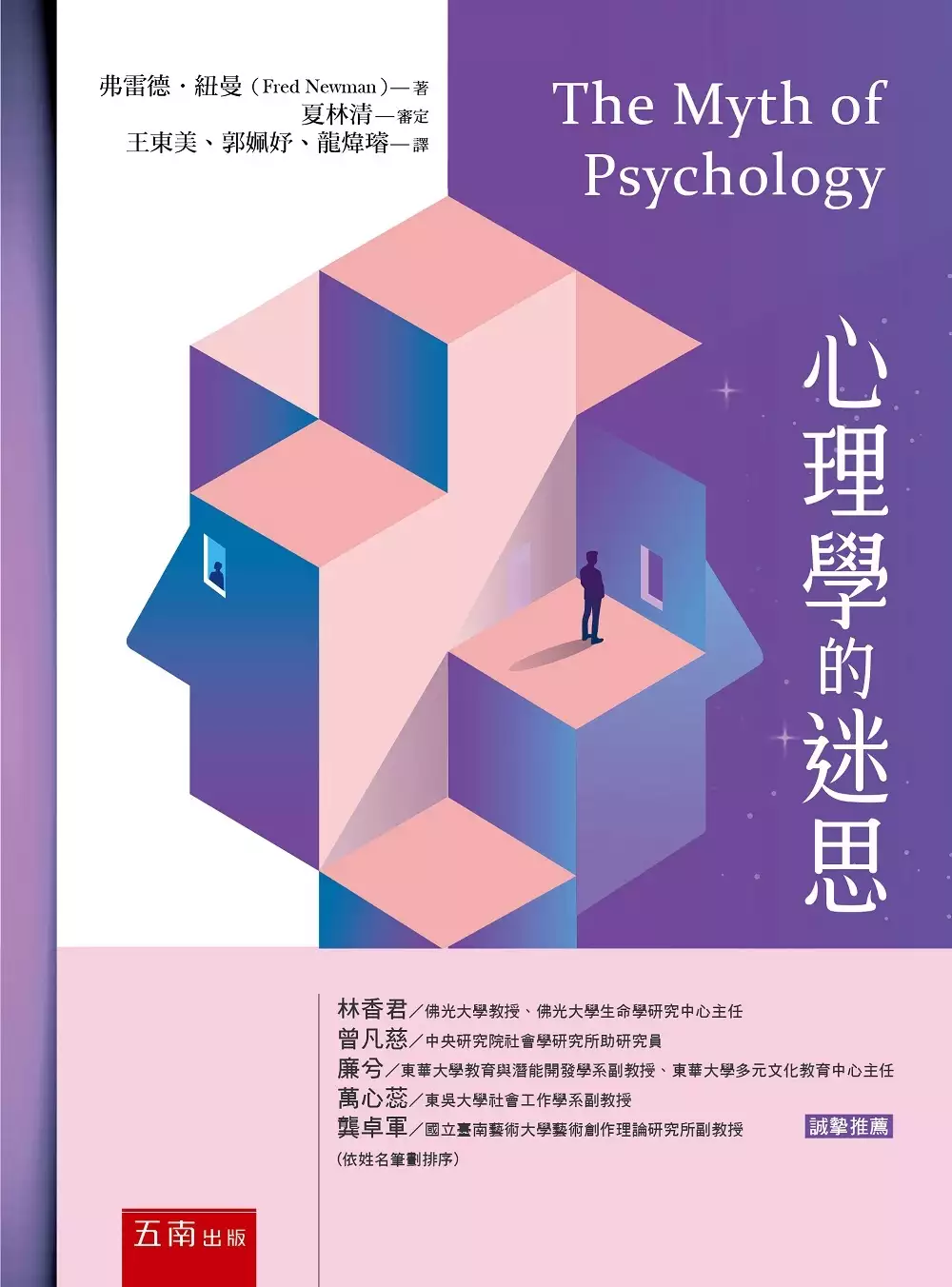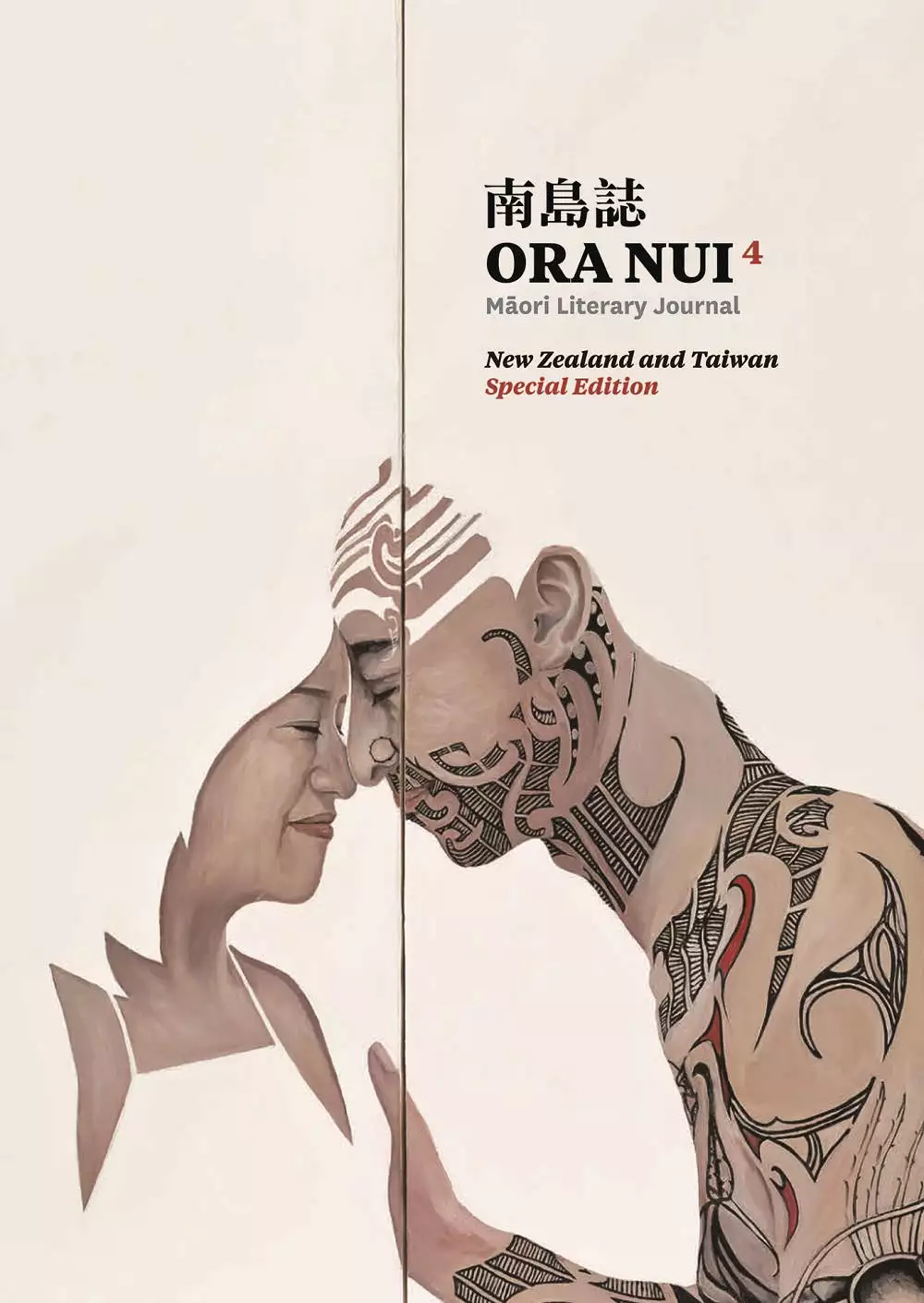side project意思的問題,透過圖書和論文來找解法和答案更準確安心。 我們找到下列懶人包和總整理
side project意思的問題,我們搜遍了碩博士論文和台灣出版的書籍,推薦弗雷德.紐曼寫的 心理學的迷思 和Anton Blank (Edition)的 ORA NUI 4 Māori Literary Journal—New Zealand and Taiwan Special Edition都 可以從中找到所需的評價。
這兩本書分別來自五南 和所出版 。
國立臺北科技大學 設計學院設計博士班 王鴻祥所指導 鄧孝天的 類比式設計中的創意思考學習方法 (2021),提出side project意思關鍵因素是什麼,來自於創意思考、類比式設計、新穎性。
而第二篇論文國立高雄科技大學 應用日語系 葉淑華所指導 李永心的 台灣大學生對於新日語借用詞之使用習慣研究 (2021),提出因為有 外來語、新日語借用詞、借詞、使用習慣的重點而找出了 side project意思的解答。
心理學的迷思

為了解決side project意思 的問題,作者弗雷德.紐曼 這樣論述:
《心理學的迷思》記錄了一個反精神醫學運動與臨床實務的方法論,其將病人視為革命者,也就是能夠改變他們的情緒性與世界的人。在這本引人入勝、非正統的書中,社會治療的創始人弗雷德.紐曼博士,戳破了整個歐洲中心主義心理學以之為基礎的迷思。 名人推薦 ●林香君(佛光大學教授、佛光大學生命學研究中心主任) 「個體意識的主流心理學與新自由主義全球殖民相依共構,它已精巧建構當今世界成為「主體性心理化」的社會,人們以為出於自主而自我管理情緒、壓力與行為以適應社會,當「適應不良」被視作個人或家內的問題繼而施以病理化、醫療化處遇時,同時是對穿牆越戶的壓迫性體制與意識形態予以忽視、遮
蔽和鞏固,去政治實是維持壓迫結構穩定的政治。」. ●曾凡慈(中央研究院社會學研究所助研究員) 「本書主要收錄了『社會治療』取徑創始者弗雷德.紐曼在1980年代到90年代初期的知名演講,挑戰了主流心理學與精神醫學許多關於(病)人、治療、治療關係、疾患、解方(cure)等等根本預設。即便這些犀利批判都有其對應的特定脈絡,在心理病理醫療模型日益鞏固的當代臺灣社會,仍有助於開啟一場極為需要的對話。」 ●萬心蕊(東吳大學社會工作學系副教授) 「社會工作存在的使命是維護人性尊嚴、社會正義,和進行社會發展和變革。然而臺灣在二戰後政經情勢下,接受美國移植的社會工作,卻成『社會問題個人化,個
人問題病態化』,背離社工精神。然,近十多年,一些臺灣心理衛生社工,於社區發展啟動精神受困者力量的工作精神和方法,而弗雷德.紐曼之基進和革命的社會治療,提醒我們更要帶著歷史、政治性和經濟的視框,與精神受困者和家屬一起組織起來,有意識地投身集體創發實踐─批判之社會變革活動,改變社會受害者角色,於日常轉化,而為『病人即革命者』!」 ●龔卓軍(國立臺南藝術大學藝術創作理論研究所副教授) 「在當代藝術的實踐領域中,病人即革命者,工具即結果,社群即是自我定義與自我認同的歷史之心,已成為屢見不鮮的通例。《心理學的迷思》讓我們了解到,心理學產業如何透過汙名化、邊緣化、標籤化,讓病者承受的社會與歷史斷
裂之痛,被全然遮蔽。本書鼓舞讀者以社群政治的創造性焦慮,投入側翼社群的建造,翻轉社會歷史處境,實為轉化恐慌迷思與成癮迷思的一帖良方。」
side project意思進入發燒排行的影片
周耀輝繼〈乜青〉之後,再次為Jason寫出以粵語填寫的新作〈想創〉。周耀輝分享了他的創作意念,他說:「我們常常聽到『想創你個心』,但其實『想創』這兩個字可以很正面,所以就以『想』及『創』字來做歌曲的主題,平時說到『想創你個心』,是指人妙想天開、不設實際的想法,但只用『想創』二字,就可以變成很正面 --- 我們真的想創出一些事情出來。〈想創〉這歌是想請大家繼續要有幻想,才能繼續創造,從而引申想創造新世界,想創造新的我的意思。」Jason十分喜歡這首編曲清新的作品,更說:「周老師的詞作令人十分感動,也很有意境,是一首十分優美的歌曲。」Edward看到周耀輝的創作,也不禁大讚道:「大師級作品果然厲害,從層面、出發點及深入程度去看,都正中Jason的想法,相信也能引起聽者共鳴。」
訂閱及按讚 陳柏宇 Jason Chan 社交平台:
Subscribe and like Jason Chan’s social pages:
Facebook: www.facebook.com/JasonChanPakYuOfficial
Instagram: www.instagram.com/ckw720
YouTube: www.youtube.com/user/jasonchanVEVO
專輯 《I》2017
想創
作曲:林家謙
作詞:周耀輝
編曲:Edward Chan / 林家謙
監製:Edward Chan
Duration: 00:04:39
醜惡多 美滿少
到處有陰森的牆
撐得過無聊
懷疑我太早知道怎樣 不想
風正吹 雨正飄
到處有瑟縮的羊
要趕快回家了 迎面樹枝只會提醒 別再想
也許這叫正常
還有誰能想飛
還有誰能想不到
難認同葉的飄搖 不相信我的渺少
還有誰能想起
每一個頃刻大了 卻未了
如炎夏有雪霜
有時狂想 想創世了
擁抱多 戰鬥少
這裡有冰雕的牆
化開變大橋
原來我最好知道怎樣 分享
請看海 懶看錶
這裡有風光一場
趁一切重生了 迎面大街鋪滿月色 就拍掌
也許喜愛異常
還有誰能想飛
還有誰能想不到
難認同葉的飄搖 不相信我的渺少
還有誰能想起
每一個頃刻大了 卻未了
轉彎有故鄉
有時狂想 天開了
lalala…
雲浮了 等我們想創
如以前能想飛
如以後能想不到
難道前路得一條 偏偏有我不渺少
如我們能想起
每一個頃刻大了 卻未了
呼吸有暖香
有時狂想 想創我了
即使有創傷
不怕創傷
甜甜睡了
Piano by 林家謙
Bass by Chan Siu Kei
Drums by 李一丁
Additional programming by Edward Chan / 鄺梓喬
Strings arranged by Edward Chan
Violins by Leslie Ryang / Gallant Ho
Viola by Kaori Wilson
Cello by Richard Bamping
Backing Vocals Arranged by 林家謙 / Edward Chan
Backing Vocals by Jason Chan / 林家謙
Protools Editing by Edward Chan / Kelvin Au
Recorded by Edward Chan / King Kong @ nova
Mixed by King Kong / Edward Chan @ nova
類比式設計中的創意思考學習方法
為了解決side project意思 的問題,作者鄧孝天 這樣論述:
隨著市場競爭的加劇,設計教育越來越重視創意思考,創意思考可以幫助學生在當前社會中更具競爭力。然而,學習創意思考並非易事。首先,創意思考具有多面性,從多個方面而非單一方面學習創意思考將更有助於培養學生的競爭力。其次,學生的初始能力是不同的,這些學生具備不同的學習能力和思考能力,單一的學習方法不適用於所有學生。由此可見,多面性以及學生初始能力的差異是學習創意思考的兩大挑戰。然而,過往的研究很少考慮創意思考的多面性,也很少考慮學生初始能力的差異。回顧過去的文獻,目前仍缺乏一套可供參考的創意思考學習方法。因此,本研究首先識別了創意思考所涉及的四個重要方面,包括發散性思維、發散性情感、流體智力與設計構
想新穎性。然後,本研究嘗試從類比式設計切入來探索創意思考的學習方法。類比式設計是一種從工業產品和大自然中汲取靈感的創新設計方法,它的內在本質與創意思考具有關聯性。利用類比式設計學習創意思考,可以應對學習創意思考的兩大挑戰。因此,本研究透過四個基於類比式設計的實驗來探索創意思考的學習方法。實驗一招募了54名大學生,他們需要從27種工業產品汲取靈感進行訂書機概念設計。結果發現設計目標在發散性情感和設計構想新穎性之間具有橋樑作用。在實驗二中, 122名和179名大學生分別要求利用字詞樹與心智圖兩種思考工具來構思問題的解決方案。結果發現這兩種思考工具在提升發散性思維和發散性情感分別具有優缺點。實驗三和
實驗四共招募了44名工業設計專業的大學生。在實驗三中,參與者以圖示和文字的表達形式將生物現象抽象化。結果發現流體智力低的參與者在生物現象抽象化方面表現較差,而流體智力中等或高的參與者則表現良好。在實驗四中,參與者在四場工作坊中分別利用四種不同的學習材料提出設計構想。結果發現具有抽象與具象平衡的學習材料最有利於產出新穎的設計構想。本研究最後將四個實驗的發現整合成一個學習創意思考的模型。該整合模型以類比式設計為基礎,提出了四種學習創意思考的方法,包括「設定設計目標」、「思維工具輔助」、「圖文抽象化」、以及「材料抽象性平衡」。本研究所提出的整合模型能夠(1)指導教育者針對創意思考四個方面提供相應的學
習方法;(2)指導教育者依據學生初始能力提供適當的學習方法。本研究填補了創意思考缺乏合適學習方法的研究缺口,對學習創意思考具有指導意義。
ORA NUI 4 Māori Literary Journal—New Zealand and Taiwan Special Edition

為了解決side project意思 的問題,作者Anton Blank (Edition) 這樣論述:
根據南島民族遷移理論,毛利人的祖先源於廣泛播遷的台灣原住民部落。因為民族遷徙,紐西蘭和台灣的原住民有著家系、語言和文化上的關聯。作為一本毛利文學期刊,本期《Ora Nui 南島誌》特別具開創性,將台灣和紐西蘭原住民作家及藝術家的作品並陳,呈現豐富的短篇小說、詩、散文、非文學及視覺藝術等作品。 According to the widely accepted Austronesian Migration Theory, the Māori people of New Zealand descend from the indigenous tribes of Taiwan, whose o
cean-going sailing technologies meant they were able to migrate widely. As a result of this movement of people, New Zealand and Taiwan share genealogical, linguistic, and cultural connections. In this ground-breaking special edition of the Māori literary journal Ora Nui, writings and artworks by the
Indigenous peoples of New Zealand and Taiwan are presented side-by-side. The resulting journal is a rich offering of short fiction, poetry, creative non-fiction, essays, and visual art from more than 50 contributors. 前言 本書具有深厚藝術性,結合台灣原住民與紐西蘭毛利族的各形式創作精華,堪稱獨一無二的瑰寶。根據南島民族遷移理論,毛利人與玻里尼西亞、東南亞、甚至馬達加
斯加的南島民族系出同源。台灣與紐西蘭的南島民族都尊敬無所不在的祖靈、珍視神話傳統,並注重與自然環境的共榮。若您閱讀本期雜誌,會發現可深入探索的共通點還有更多,帶有魔幻寫實的作品呈現,即使在現代台紐異文化的隔閡下依舊能有共感。期待這樣的文化交流/尋根能繼續彼此激盪。 Foreword This issue of Ora Nui is a jewel; light dances across the words and images sparking joy and wonder. It is filled with contributions from my favourite Mā
ori and Taiwanese writers and artists. The book is an objet d’art. The art contributions are adrenal rushes between the text. The sensory engagement with books, and our enjoyment of the experience means that we will always love the paper page. According to the theory of Austronesian migration, M
āori descend from the Indigenous tribes of Taiwan, who migrated widely. The migration means that Māori share a lineage with the peoples of Polynesia, Southeast Asia, West New Guinea and Madagascar. This is an aspect of the Māori history that I seldomly hear about. Over a number of years, I atte
nded the Taipei Book Fair and met Su Shin, who has edited the Taiwanese contributions in this issue of Ora Nui. Su Shin has Indigenous Taiwanese heritage; so too does 60% of the Taiwanese population. We were both interested in exploring this shared history of our origins, and planned our way towards
this project. The tropes of Indigenous writing are present across this collection. The omni-presence of whakapapa and lineage, indigenous engagement with the environment, the importance of mythology. The themes play out across our contemporary experience. There’s amagic-realistmood too. As you
read the work, you’ll get a sense that there’s something more going on here. New Zealand editor Kiri Piahana-Wong has co-ordinated the project, and pulled everything together to forma whole. She has impeccable instincts and over the last two issues of Ora Nui, has elevated the quality of the jou
rnal. When I think about the make-up of this team of three, and the Indigenous diversity that we represent, it’s a life imitating art moment. No reira tēnā koutou kātoa. Anton Blank Publisher Introduction—Taiwan Taiwan has been subjected to a complicated history that means today it is h
ome to a diverse set of communities. Living here are people from the sixteen officially recognized Indigenous tribes, people whose ancestral histories trace through several waves of migration from dynastic-era China, people who migrated from20th century China, and—most recently—people who have migra
ted from Indonesia, Vietnam, and various other places. Many or even most of the people living in Taiwan have families which span multiple of these four main groups, and—of course—among Taiwan’s nearly 24million inhabitants there are countless other smaller constituencies. It was at Taipei Book F
air a few years ago that I first met Anton Blank and heard about Ora Nui. I had read about the Austronesian Migration Theory prior to that encounter, and I knew that many thousands of years ago, people who had been living in Taiwan sailed southward to modern-day Indonesia, the Philippines, Hawaii, a
nd—eventually—all the way to New Zealand. Despite this understanding, however, I had not considered the extent to which, as a result of this migration, Taiwan and New Zealand share genealogical, linguistic, and cultural connections. So after some enlightening conversations, I decided to join Anton i
n presenting a collection of art and literature from Taiwan alongside comparable works from New Zealand. Now, in this journal, expanding significantly upon that earlier presentation, we have collected more pieces of art, literature, and research. The subjects addressed by the contributors are ma
ny, and their works engage with topics as diverse as the aftermath of the White Terror, the maintaining of Indigenous identities in a cosmopolitan world, and the perception of new migrants by Taiwanese society. And although nothing has been chosen on the basis of political or ideological alignment,
I believe that, when finished with this edition of Ora Nui, you the reader will be in possession of an empathetic understanding of the lives and histories of a great many people. Through close engagement with the journal’s fiction, visual art, and research, you will find yourself immersed in worlds
of individuals and families and communities living through periods of major social and political change, and I hope that, through this experience, you will learn much about identity and customs and—maybe—a little bit more about yourself, too. Shin Su Editor, Taiwan Introduction—New Zealand A
s I sit at my computer in Auckland, New Zealand, I am conscious of the Taiwanese readers who will read this journal and may possess little background knowledge of New Zealand history. I address my opening remarks largely to these readers, while also thanking my Taiwanese counterpart, Su Shin, for wo
rking with me on this project. I have found our work together illuminating and enriching, and I continue to be struck by the similarities and parallels between the lives, struggles and concerns of Indigenous peoples in New Zealand and Taiwan. I hope that readers of Ora Nui 4 will share this same exp
erience. One hundred and eighty years ago, in 1840,Māori and Pakeha signed New Zealand’s founding document, The Treaty of Waitangi. At that time,Māori lived in sub-groups (hapu) within larger groups (iwi) along tribal lines. The Māori population numbered 70,000 to 90,000 as at the signing of the
treaty, and more than 500 chiefs signed on behalf of their peoples. At this time the Pākehā population was very small, approximately 2000 people, putting Māori overwhelmingly in the majority. Today, in 2020, the landscape has shifted dramatically. Iwi and hapu links remain at the heart of Māori id
entity, but most Māori live in urban areas now and many have moved abroad. A long fight has been fought over land ownership and compensation, and it is not over yet. The consequences of colonialism remain far reaching, and racism and poverty are still endemic issues for our people. And Māori make up
just 16.5% of the overall population of New Zealand. Unsurprisingly Māori writers and artists often touch on the above concerns in their work, and excellent and insightful pieces on these subjects appear in Ora Nui 4. However, in recent years there has been a noticeable shift in Māori writing,
with writers feeling increasingly free to write about whatever interests them. There is no longer an expectation that we ‘must’ write about ‘Māori topics’. Thank goodness for that, as Ora Nui 4 is all the richer for creative pieces spanning an incredible range of topics, such as: a space odyssey set
on Mars, a woman determined to save the dolphins, a Friday night in downtown Mongolia, an American road trip, a blossoming relationship between a screenwriter and a barista, and many more. I hope you enjoy the richness and diversity of Ora Nui 4. Kiri Piahana-Wong Editor, NewZealand
1 Foreword 2 Introduction—Taiwan 3 Introduction—New Zealand 4 Visual arts, poetry & short fiction 5 Aziembry Aolani 7 Badai 巴代 10 Cassandra Barnett 12 Anton Blank 20 Nigel Borell 24 Jacqueline Carter 26 Gerry Te Kapa Coates 29 Gina Cole 38 Kaling Diway 陳勇昌 40 Kristy Dunn 41 Amber Esau 47 Anahera
Gildea 49 Teoti Jardine 50 Robert Jahnke 54 Hinemoa Jones 58 Kelly Joseph 66 Kahu Kutia 71 Arihia Latham 74 Idas Losin 宜德思 · 盧信 76 Steve Lovett 80 Eval Malinjinnan 依法兒·瑪琳奇那 84 Faisu Mukunana 劉武香梅 91 Claudine Muru 92 Etan Pavavalung 伊誕 · 巴瓦瓦隆 98 Reretan Pavavaljung 磊勒丹 · 巴瓦瓦隆 102 Sakuliu Pavavaljun
g 撒古流 · 巴瓦瓦隆 109 Kiri Piahana-Wong 111 Michelle Rahu Rahu Scott 117 Vaughan Rapatahana 129 Syaman Rapongan 夏曼·藍波安 133 Aimee Ratana 137 Jean Riki 145 Reihana Robinson 148 itih a taos 根阿盛 161 Apirana Taylor 164 Stacey Teague 166 Anne-Marie Te Whiu 168 Donna Tupaea-Petero 170 Iona Winter 176 Briar Wood
181 Austronesian studies 182 Ubange Aruladenge 柯玉卿 188 Kuo-Fang Chung 鍾國芳 198 Gerry Te Kapa Coates 206 Yu-wen Fu 傅鈺雯 216 Darryl Sterk 石岱崙 223 Creative non-fiction and essays 224 Marino Blank 227 Chan Chang 張正 231 Chih-fan Chen 張芷凡 234 Paelabang Danapan 孫大川 239 Joshua Hema 245 Nadine Anne Hura 2
52 Liyan 立言 260 Sung Hwan Bobby Park 267 Pairang Pavavaljung 許坤仲 271 Ger-Er(Hegel) Tsai 蔡格爾 主編簡介 Anton Blank 近20年的南島遷移理論,絕大多數支持南島民族在超過四千年前由台灣島嶼遷移到太平洋其他地區。紐西蘭毛利人也屬於南島民族之一,2012年紐西蘭由Anton Blank創刊的《》文學期刊,宗旨為幫新一代毛利創作者發聲與國際讀者對話,繼第二期與澳洲原住民創作者和第三期與歐洲創作者合作後,第四期選擇與毛利人血緣歷史的連結甚深,並有科學嚴謹考證南島語族的發源地「台灣」為主題
。 《Ora Nui 4 南島誌》收錄超過五十位台灣和紐西蘭創作者,廣納文學、視覺藝術、非文學創作和南島文化研究等多元題材。感謝文化部南向翻譯與出版交流計畫補助,龍登出版總策畫,書林發行。本刊的發行對象是社會意見領袖,文化政策、原住民機溝單位,圖書館,研究院所機構等。許多在Ora Nui發表過的作者和藝術家,後來都受邀出版或舉辦藝術展。 *Ora Nui:毛利文,意思是健康成長。
台灣大學生對於新日語借用詞之使用習慣研究
為了解決side project意思 的問題,作者李永心 這樣論述:
在台灣光復之前,日本殖民台灣有將近50年的歷史,因受過日本的日語教育,目前台灣的主流外來語詞彙以日語詞彙為多。筆者在先行研究發現台灣與日本學界在外來語廣義的定義上相同,但是在狹義上不同。為了查明日語借用詞之定義,透過蒐集文獻,並進行分析出日語借用詞的定義以及分類。最後根據文獻資料歸納出本研究的分類方法。 由於筆者在觀察下發現現在的台灣大學生對於這類的借用語使用很是頻繁,希望探究其背後的使用成因,因此提出本研究。為瞭解時下台灣大學生對「新日語借用詞」的使用習慣與中文相近或是同義詞彙與「新日語借用詞」之間的選擇,以及最常被使用的是哪個分類的借用詞。本研究採問卷調查,經統計分析、交叉分析後發現,
台灣大學生最常使用的借用詞分類是造詞。對於借用詞的使用也相當頻繁,其原因大多是因為平常就習慣使用與周遭的人都使用該借用詞。並不論是對於自己或是他人使用借用詞一事給予正面、肯定的態度;另一方面,卻也擔憂使用借用詞時間一久易忘記中文語文辭彙表達。且認為對於不懂的借用詞應該要注意原文意思再去做使用。 本研究藉由整理「新日語借用詞」之使用過程,提出其對台灣地區語言和文化具有關聯性,期待這些成果對於未來的日語教育與學習者能有所幫助。